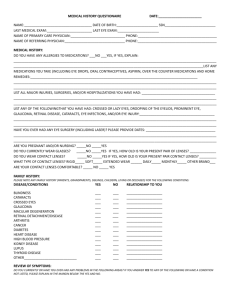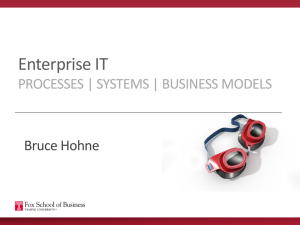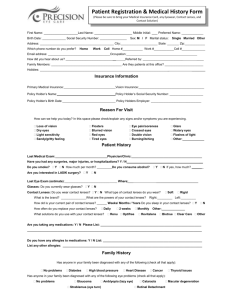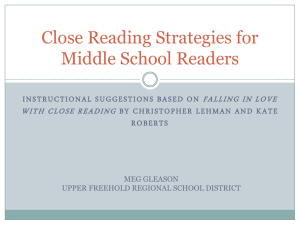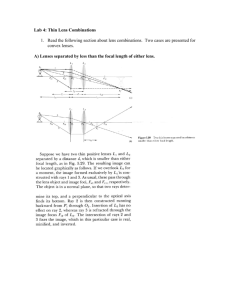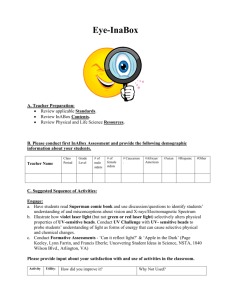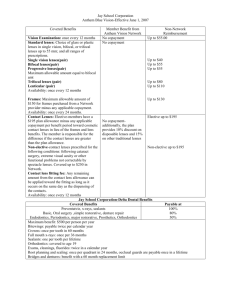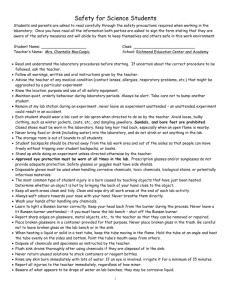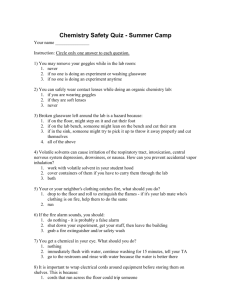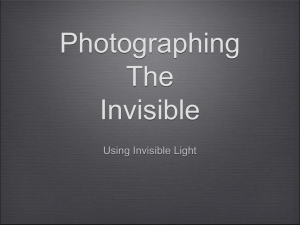Reflective Essay #2 - Samuel Morse Productions
advertisement
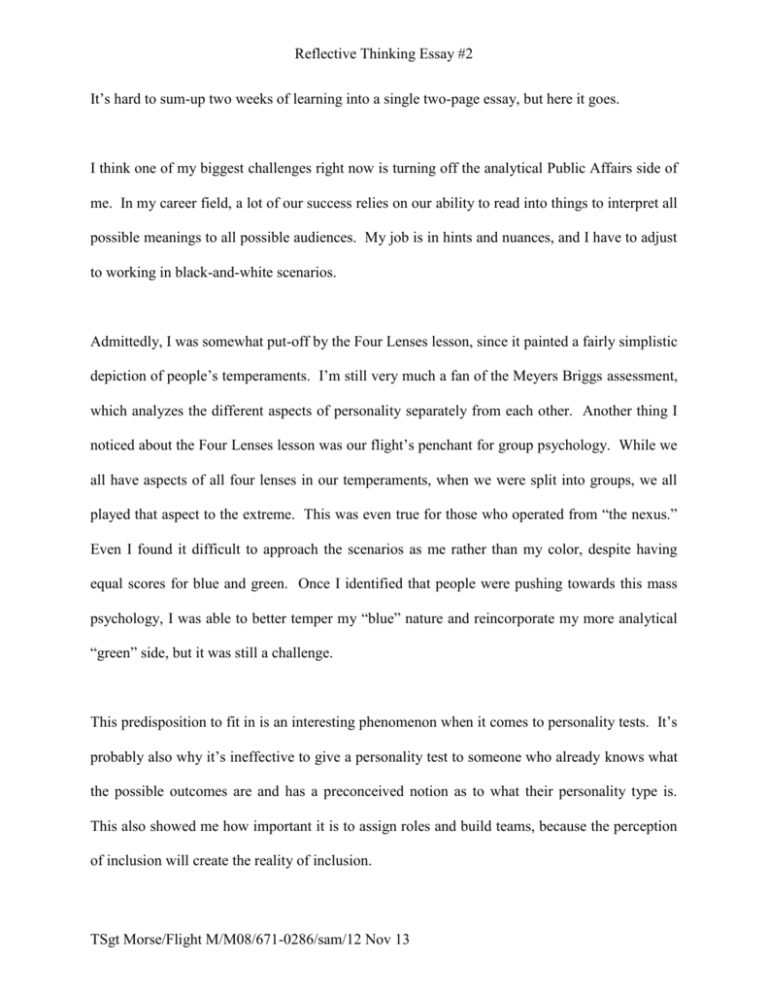
Reflective Thinking Essay #2 It’s hard to sum-up two weeks of learning into a single two-page essay, but here it goes. I think one of my biggest challenges right now is turning off the analytical Public Affairs side of me. In my career field, a lot of our success relies on our ability to read into things to interpret all possible meanings to all possible audiences. My job is in hints and nuances, and I have to adjust to working in black-and-white scenarios. Admittedly, I was somewhat put-off by the Four Lenses lesson, since it painted a fairly simplistic depiction of people’s temperaments. I’m still very much a fan of the Meyers Briggs assessment, which analyzes the different aspects of personality separately from each other. Another thing I noticed about the Four Lenses lesson was our flight’s penchant for group psychology. While we all have aspects of all four lenses in our temperaments, when we were split into groups, we all played that aspect to the extreme. This was even true for those who operated from “the nexus.” Even I found it difficult to approach the scenarios as me rather than my color, despite having equal scores for blue and green. Once I identified that people were pushing towards this mass psychology, I was able to better temper my “blue” nature and reincorporate my more analytical “green” side, but it was still a challenge. This predisposition to fit in is an interesting phenomenon when it comes to personality tests. It’s probably also why it’s ineffective to give a personality test to someone who already knows what the possible outcomes are and has a preconceived notion as to what their personality type is. This also showed me how important it is to assign roles and build teams, because the perception of inclusion will create the reality of inclusion. TSgt Morse/Flight M/M08/671-0286/sam/12 Nov 13 While I didn’t agree so much with the four lenses assessment, the subsequent lesson on Team Building certainly made up for it, and explained the importance of the four lenses when it comes to leadership. The Team Dynamics section was particularly useful, looking at how teams usually have a creator, advancer, refiner, and an executor. This is very true in a Public Affairs setting because we have our story writers (creators), team leads (advancers), editors (refiners), and the final approval (executors). I also started to notice how certain people in my office tend to play to a certain color (in reference to the Four Lenses) and lean towards a specific role, myself included. I noticed that in a work environment, I tend to be a refiner and sometimes an advancer. To be an effective leader who empowers their Airmen to succeed on their own, I probably need to focus more on advancing and less on refining. I think it will be helpful when I get back because I’ll be better prepared for assigning tasks and managing my people. Another lesson that will likely be helpful is the one on full-range leadership development. The wide variety of leadership styles discussed will likely help me to analyze what my leadership style is at a given point, what the strengths and weaknesses are of that leadership style, and also how I might need to adjust to get the desired effect I want. One of my biggest hopes for my time at NCO Academy is to learn to be a more effective leader, and these concepts should help me do just that. My Airmen are nothing if not temperamental, as am I, so having a degree of understanding of leadership styles will add a much-needed level of predictability to my interactions with them. 2
